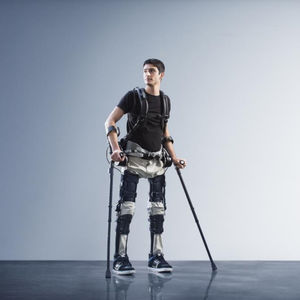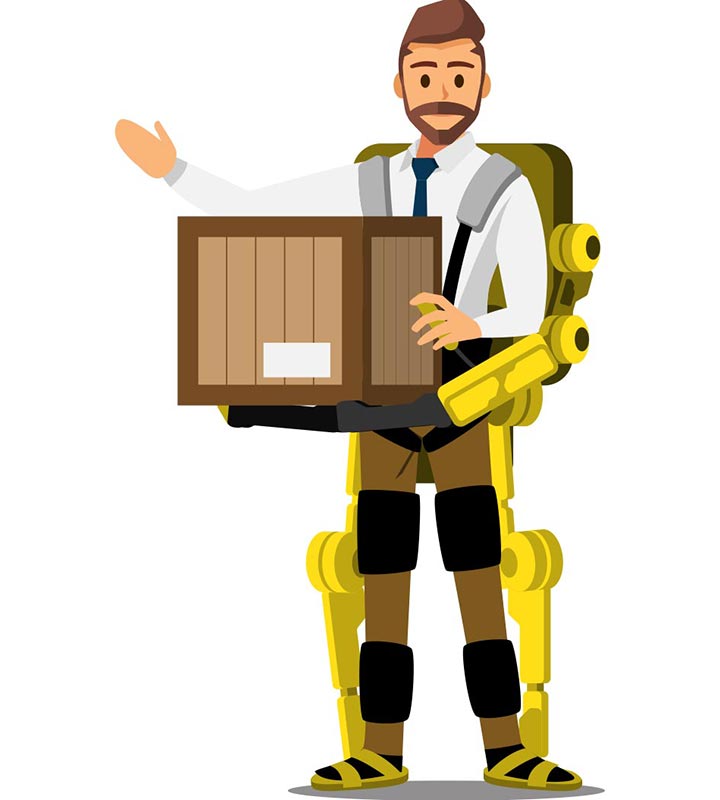The exoskeleton, a true technological innovation, stands out for its ability to improve daily life in medical, industrial, and military fields alike. This portable device activates like a motorized armor, which not only supports but also assists human movements. Whether helping a person walk again after a stroke or easing the repetitive tasks of operators in a factory, the exoskeleton redefines the way we interact with our environment while preserving our physical health. Continuous advancements open up a horizon full of promises for this revolutionary technology.
Table des matières
ToggleGlossary: Understanding the exoskeleton at a glance
An exoskeleton is a revolutionary device that combines the best of mechanics and electronics to assist the body in its movements. Like an external framework, it supports different parts of the body, acting as an artificial skeleton.
These robotic devices are created to improve, strengthen, or facilitate the posture and movements of the user. They do not produce additional force by themselves but redistribute loads, making daily tasks easier, such as housework, cooking, or organizing.
There are several types of exoskeletons, each suited to specific needs. Medical exoskeletons, for example, are designed for people with disabilities, allowing them to regain partial or total movement after an accident or an illness like a stroke.
In the industrial world, exoskeletons also find their place by relieving workers from repetitive and physically demanding tasks. Companies like RATP now equip their agents with exoskeletons to improve their health and extend their ability to work efficiently.
Among the most recent innovations, some exoskeletons are connected to the brain. For paralyzed patients, they allow movement to be directed by thought, opening a promising future for people with severe paralysis.
The operation of exoskeletons relies on mechanical joints activated at the user’s request. Different sensors detect the body’s natural movements, allowing the exoskeleton to react in a coordinated and fluid manner.
The development of these devices continues to advance rapidly, notably thanks to initiatives like those of HBR Innovation. The main goal and interest of exoskeletons lie in their ability to improve the quality of life of individuals, whether in a medical or professional context.
In terms of design, the construction of exoskeletons employs advanced materials that ensure both robustness and lightness. Models like the Biolift exoskeleton are specifically designed for industrial use with ergonomic adjustments aimed at user comfort.
The military applications of exoskeletons are not to be overlooked. These motorized armors give soldiers the ability to carry heavy loads over long distances, thereby increasing their endurance and effectiveness in the field.
To better grasp the impact of exoskeletons in our daily lives and discover the factories of the future that are adopting these technologies, refer to this in-depth article: The Factory of the Future.
Exoskeletons represent a major and multifaceted advancement that transforms our understanding of the relationship between humans and technology. They mark a turning point towards smarter, more efficient environments adapted to our physical capabilities.

FAQ: Understanding the exoskeleton at a glance
Q: What is an exoskeleton?
A: An exoskeleton is an external mechanical device that supports and assists the user’s movements. It can improve, strengthen, or facilitate posture and daily actions such as housework, cooking, or organizing.
Q: How does an exoskeleton work?
A: Exoskeletons use mechanical and robotic components to assist the user in their movements. Some systems are connected to the brain, enabling movement control by thought.
Q: What are the benefits of using an exoskeleton?
A: The exoskeleton can relieve repetitive and physically demanding tasks, redistributing loads to facilitate movements. It is used in various sectors, such as health to assist paralyzed individuals and industry to reduce operator fatigue.
Q: What is the role of the exoskeleton in rehabilitation?
A: In rehabilitation, the exoskeleton can help patients who have suffered a stroke or paralysis to learn to walk again by supporting their bodies and guiding their movements.
Q: Do exoskeletons create additional force?
A: No, exoskeletons do not create additional force but redistribute loads to better assist the user’s movements.
Q: What are the current innovations in the field of exoskeletons?
A: Research on exoskeletons is progressing rapidly, with innovations such as medical exoskeletons connected to the brain for thought control, and devices to enhance the efficiency of operators in the factories of the future.





